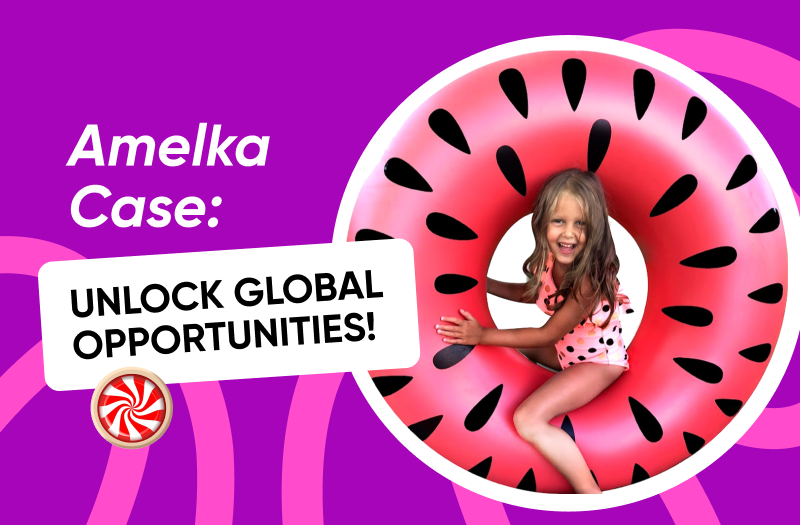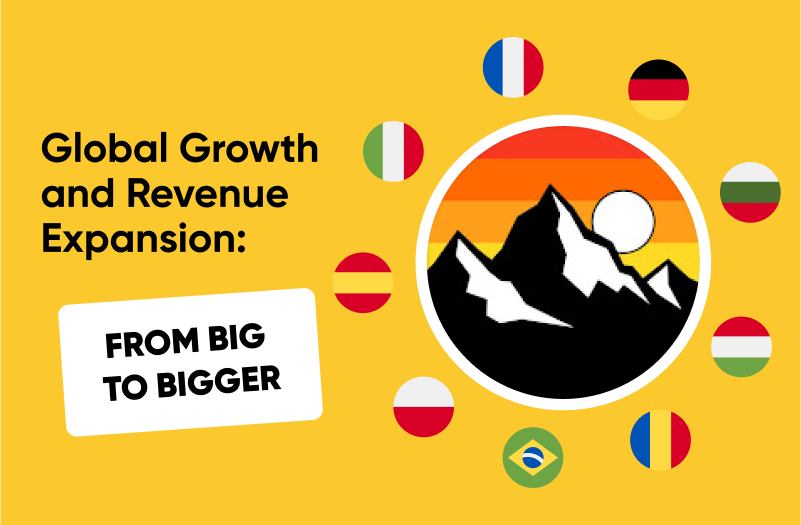01
Regional Data Snapshot (As of 2025)
02
CPM Benchmarks Across LATAM, MENA, and SEA
03
Latin America (LATAM): Localize First
04
Middle East & North Africa (MENA): High Engagement, High CPM, Low Competition
05
Southeast Asia (SEA): Volume + Engagement = SEA YouTube Strategy
06
From Metadata to Full Dubbing: What Actually Scales

Not Sure Which Languages to Choose?
So, what do you do when you’ve squeezed everything you can from your English-speaking or native-language audience? You go where the growth is.
That usually means looking outside your home country. And right now, three regions are exploding with YouTube potential: Latin America (LATAM), the Middle East and North Africa (MENA), and Southeast Asia (SEA).
Not because they’re trendy. Because they’re practical, let’s break it down region by region.
Regional Data Snapshot (As of 2025)
Let's take a quick look at the data for these regions today.
LATAM
- Mexico: 96M YouTube users
- Brazil: 144M YouTube users
- Spanish is the second most used language on YouTube
MENA
- Egypt: 50M+ YouTube users
- Arabic is spoken by 400M+ globally
- Watch time: Among the highest globally per user
SEA
- Indonesia: 139M YouTube users
- Philippines: 58M+
- Mobile viewing: 70–90% of sessions
- Preferred languages: Bahasa, Tagalog, Thai, Vietnamese
CPM Benchmarks Across LATAM, MENA, and SEA
Let’s get to the numbers. These are real CPMs (cost per 1,000 monetized views) collected from over 3,000 channels connected to AIR Media-Tech. This is actual revenue data from creators on the ground.
LATAM
- Brazil – $0.82
- Mexico – $0.91
- Argentina – $0.55
- Colombia – $0.62
- Peru – $0.61
- Chile – $1.01
- Uruguay – $0.76
MENA
- Saudi Arabia – $0.99
- United Arab Emirates – $1.93
- Egypt – $0.34
- Morocco – $0.38
- Iraq – $0.32
- Tunisia – $0.29
- Jordan – $0.45
SEA
- Indonesia – $0.42
- Philippines – $0.55
- Malaysia – $0.78
- Thailand – $0.65
- Vietnam – $0.42
These are solid reference points, and they tell you two things. CPMs vary massively. And the biggest wins don’t always sit at the top.
Don’t Get Fooled by High CPMs
Yes, countries like the U.S., Canada, or Germany flash high CPMs, but that comes with serious competition. English is spoken by 1.45 billion people. You’re up against 12+ million creators on YouTube, all aiming for the same viewers.
Localized markets, on the other hand? Way less noise. There’s room to build.
Low CPMs Can Still Reach Billions
Brazil’s CPM is $0.82… not huge. But with 144 million users and much lower creator saturation, that $0.82 can stack up fast. Same with Mexico, Indonesia, or the Philippines. Lower CPM + high view potential = real opportunity. We’ve seen it play out across hundreds of channels.
If you’re optimizing for growth in 2025, stop chasing CPM unicorns and start thinking strategically about volume, language, and competition.
So, let's take a closer look at each region.
Latin America (LATAM): Localize First
YouTube LATAM growth is a fact backed by data. Mexico is the second-largest YouTube market in the world. Brazil is third. Argentina, Colombia, and Peru are all in the top 15. These countries are hooked on video.
But Latin American viewers love content that feels local. Translating into Spanish isn’t enough. You need the right Spanish. The way people speak in Bogotá is not the same as in Mexico City or Buenos Aires.
We once worked with a U.S.-based creator in the fitness niche. His content had solid global appeal, but Spanish-speaking views were always low, even though he had subtitles. Once we localized his top 10 videos using neutral Latin American Spanish (and adjusted a few cultural references), his Spanish-speaking audience jumped by 130% in six weeks.
Translation was just the start. We reworked titles and thumbnails to match regional humor and tone, and switched CTA phrasing to what audiences actually respond to in those markets.
Want to grow your audience in Latin America? Localize YouTube channel content first. Research slang. Swap idioms. Avoid European Spanish if your audience is in LATAM.
The best-performing localized channels we’ve seen in this region do one thing right from the start: they treat Brazil as its own strategy. YouTube for Latin America is not just Spanish. Brazil is massive, under-competitive, and Portuguese is your key.
That’s why we help many creators build a separate Portuguese content arm first. One kids’ channel saw its Portuguese version hit 5 million subs in under a year, all without changing the video format. They just worked with us to get the LATAM localization right.

If you’re looking to grow your audience in Latin America, remember this: generic subtitles won’t cut it. You need region-aware subtitling and metadata. AIR Media-Tech has a full localization team that specializes in Spanish for LATAM.
If you want to grow outside your home base, get in touch with us today. We’ll analyze your analytics, recommend your top content strategies by region, and handle the rest – from translating your videos for global reach to adapting your messaging for multilingual growth on YouTube.
Middle East & North Africa (MENA): High Engagement, High CPM, Low Competition
Saudi Arabia has one of the highest YouTube watch times per user in the world. Egypt is home to more than 50 million internet users. And countries like the UAE and Morocco are seeing double-digit growth in mobile video consumption.
But most creators ignore the region completely. That’s what makes MENA YouTube localization such a huge opportunity.
But Arabic is not one dialect. MENA audiences connect to familiarity. A Saudi viewer might understand MSA, but they connect emotionally with Gulf dialects. A Moroccan teen might speak French and Arabic, but relate more to Darija.
Translating into Modern Standard Arabic is a good baseline, but to really connect, you have to localize for either Gulf Arabic or Egyptian Arabic, depending on where you want to grow.

One of our creators in the storytelling niche saw almost no traffic from MENA, despite great international appeal. We helped him localize for the MENA region by rewriting his titles in Egyptian Arabic and adding subtitles that used local idioms. The result is that his top video hit 200,000 views in Egypt alone. Before that, he was getting less than 5,000.
If you’ve got content that can work in education, tech, lifestyle, or storytelling, this market is wide open. If your content is informative, try dubbing key episodes with localized dialects. If it’s entertainment, your voice and humor need to feel native. Localizing for the MENA region means understanding cultural expectations – what’s allowed, what’s off-limits, and what audiences celebrate. Translating for regional markets here is the only way to win.
We’ve also seen Arabic content find surprising traction in diaspora-heavy areas: France, Germany, and even the US. Translating for regional markets, but don’t forget the global Arabic-speaking population.
Want international YouTube growth for your channel?
We’re ready to help. We’ve scaled channels in 50+ languages, helped creators enter top emerging markets on YouTube, and supported them all the way to view growth. Contact us today, and we’ll help you build your next audience – wherever they are.
Southeast Asia (SEA): Volume + Engagement = SEA YouTube Strategy
YouTube in Southeast Asia is all about numbers, and those numbers are wild. Indonesia alone has 139 million YouTube users. The Philippines has over 58 million. Vietnam, Thailand, and Malaysia are right behind.
But what sets SEA apart is how people consume content.
Viewers in Southeast Asia are mobile-first. Most of their YouTube sessions happen on phones. That means thumbnails and titles need to pop on small screens. It also means short, fast-paced videos do better, especially when localized properly.
A big issue we see is that English content gets decent impressions in these regions, but never turns into strong watch time. Because most viewers are skimming. They’re interested, but they don’t fully understand what’s happening.
So, if you want to expand to new YouTube markets in SEA, start with subtitling for SEA viewers in Bahasa Indonesia, Tagalog, Vietnamese, or Thai. Сreators can double their retention just by switching from auto-subtitles to real human subtitling in Thai.
Thai, in particular, is a sensitive language when it comes to tone. Misplaced emphasis or poor translation kills engagement. That’s why Thai translation should always be handled by native professionals.

Southeast Asia YouTube rewards culturally-aware creators. Indonesia, Vietnam, and the Philippines are some of the top emerging markets on YouTube right now. But each is its own language, its own culture. Don’t lump them into "Asia" and expect results.
To win in SEA, you need a SEA YouTube strategy that includes optimized metadata, pro dubbing, and clear local cues. Even things like time stamps and voiceover pace affect how long viewers stick around.
Creators from YouTube’s Top 10 Translate with Us!
Let’s pick the best translation strategy for your channel!
From Metadata to Full Dubbing: What Actually Scales
We’ve helped 400+ creators expand to new YouTube markets with a mix of native voiceovers, cultural consulting, and AI polish. The best results always come from a mix: AI for metadata, human for content. That’s how we help creators translate for global growth while keeping things scalable. It’s just smart translation work, region by region.
You don’t have to fully dub your entire archive. That would be expensive and overwhelming. But here’s what we recommend because we’ve tested it again and again:
- Just adding subtitles is not localization.
- Adding Arabic, Spanish, and Thai translation options in metadata alone can lead to meaningful visibility shifts.
- AI dubbing without supervision often sends the wrong signal to the algorithm.
- Viewers can tell if a translation was done in a rush or without cultural awareness.
YouTube's global audience growth is the next frontier.
Want to localize your YouTube channel for the MENA region? Looking for LATAM localization tips or subtitling for SEA viewers? Let’s build your YouTube global audience the right way. Contact AIR Media-Tech to translate and localize your YouTube content for global growth.







